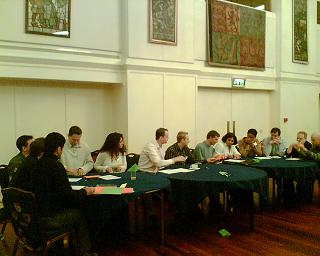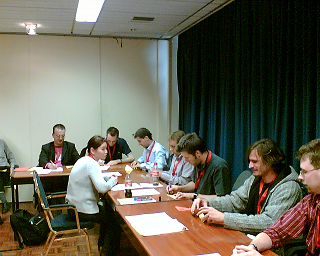The incredible shrinking program
I just don’t seem to learn, do I?
A classic experiment
Years ago, during a course on software engineering, the professor described a classic experiment: several programmers were given the same application to write. Each was asked to optimize one non-functional requirement: speed of implementation, speed of application, size of application, readability of the code, run-time memory use… Each developer was able to optimize what was asked of them, at the expense of one or more of the other qualities. No surprise there. TANSTAAFL.
I decided to perform this experiment on myself.
At the time, I was writing a hypertext help compiler and viewer, so that I could always pop up the programming reference documentation I needed while programming. The first useable version of the executable was about 20K (yes 20480 bytes) long. It might be fun to see how long I could keep the application at that size. As this was a resident application, the smaller the program was, the more memory was available for the IDE, compiler, debugger and the application I was developing.
A simple game with the expected results

So, I played a game with the following simple rules:
- Get the most important feature from the feature list and implement it, until it works
- If the application is larger than 20K, rework it until it’s smaller than 20K. All the features must still work!
- Again…
The results were as expected: I managed to keep the application under 20K. This came at the cost of implementation time: sometimes it took a lot of ingenuity and work to squeeze the code back into that 20K. I had to find duplicated stuff, places where I could simplify the code, error handling I could remove because I had made it impossible for common user mistakes to happen…
And some unexpected results
I expected code readability to suffer: I might have to abandon my object-based C writing style, replace C code with more efficient assembler or use complicated tricks to keep the application small. I never needed to do that. If anything the code became more readable…
There were some unexpected side effects. In my experience, the longer you worked on a program, the more features you added, the more difficult it was to add (and debug!) new features. This program was really weird: it kept getting easier to add new features. Wow! That hadn’t happened to me until then and wouldn’t happen again for a long time after that.
This was the first program where I and my users (the application was released as shareware by then) ran out of ideas before my programming ran out of steam.
And what have we learned from this?
I stopped playing with limited home computers and started to work on real men’s computers: Unix workstations. I stopped making my programs small. There was no need: there was plenty of memory (megabytes!) in those machines. I was taught that it was cheaper to upgrade memory than to spend expensive programmer time.
And things were back to normal: with each new feature, it became more difficult to add another one. That’s how it’s supposed to be, isn’t it?

 Rob and I then introduced the “
Rob and I then introduced the “
 Theory of Constraints @ XP Day Benelux
Theory of Constraints @ XP Day Benelux